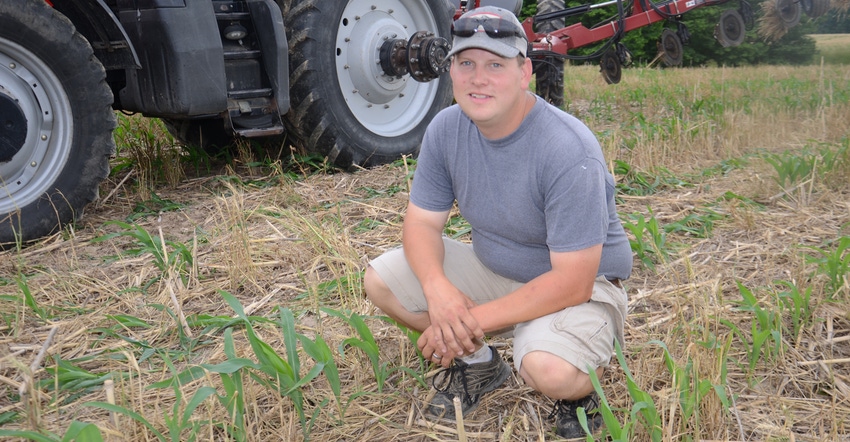
Ask Carter Morgan about the most important lessons he has learned as a young farmer, and he doesn’t hesitate. Morgan farms with his brother, Brent, his dad, Brian, and his uncle Darrell near Cayuga, Ind. He also works part time for the Vermillion County Soil and Water Conservation District, helping other farmers learn about using no-till and cover crops.
“I learned pretty quick that machinery maintenance is important,” he says. “You keep machinery in good condition and either trade it or upgrade it when necessary.
“By the same token, it’s just as important to pay attention to land maintenance. How can you make the land that you farm better and more productive? For us, that often comes down to adding tile where we need it and utilizing cover crops to prevent soil erosion over winter and improve soil health.”
Tiling pays
The Morgans have installed tile over time, but an example from 2020 reminded them just how important tile can be, Carter says. The last field of corn they harvested was a long, large field, split by waterways and a ditch. They harvested it in three sections.
“The south end has some tile, but not pattern tile, and it made around 200 bushels per acre,” he explains. “We thought that was OK.
“Then the next section, where it’s good ground but mainly only has some old clay tile in it, made 210 to 215 bushels per acre. But when we moved to the other side of the ditch where it is pattern tiled, the yield monitor didn’t go below 230 and spent lots of time in the 240 to 260 bushels per acre range. We figure tile added about 35 bushels per acre in that field.”
Why did tile help so much? “It helps during the entire year, but it starts with getting a more uniform population,” Morgan says. “We dropped 36,000 seeds per acre, and we had 34,000 to 35,000 plants per acre where it was pattern tiled. Where it wasn’t tiled, we would have 34 to 35,000, then it might taper off to 28,000 for a stretch. Plus, part of it is that where drainage is poor, corn roots have less oxygen at key times.”
Plant cover crops
The Morgans don’t have cover crops on every acre, but they seed as many acres as they can each year. They had about 2,000 acres of cover crops heading into the 2020 season, and that much or more heading into 2021.
“It was dry last fall, but Brent said we still plant corn and soybeans when its dry, so let’s seed our cover crops,” Morgan says. “We’re glad we did. When it rained, they emerged, and in most cases, we got good growth since late fall and early winter was mild. That gave us protection from soil erosion during the summer.”
The Morgans have some fields aerially seeded and drill others after harvest. They intend to utilize both herbicides and crimping to terminate covers in some fields in 2021.
About the Author(s)
You May Also Like




